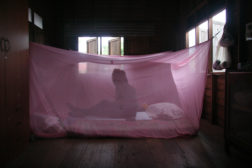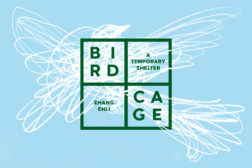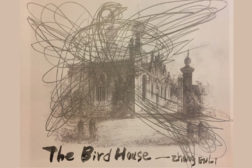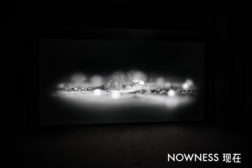

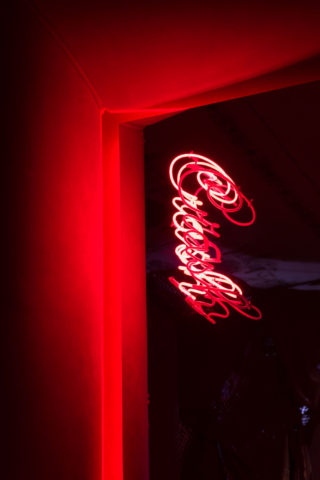
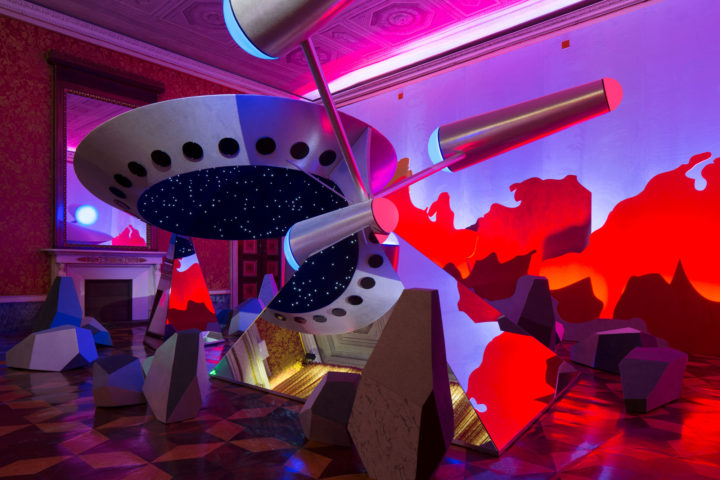

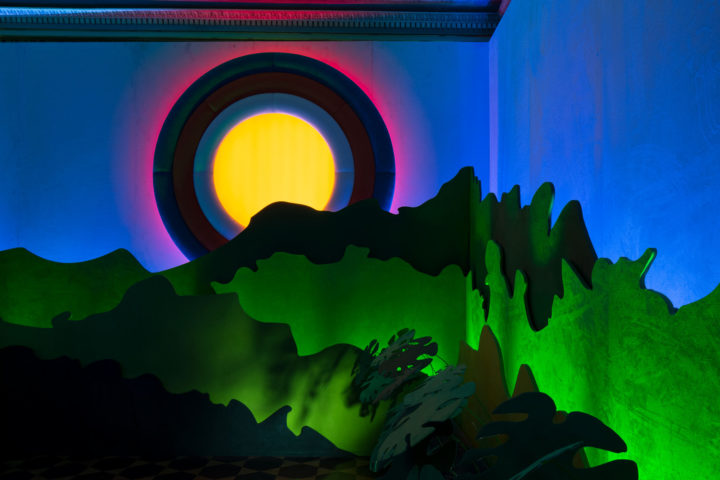
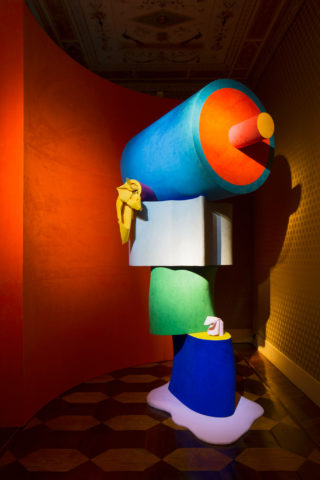
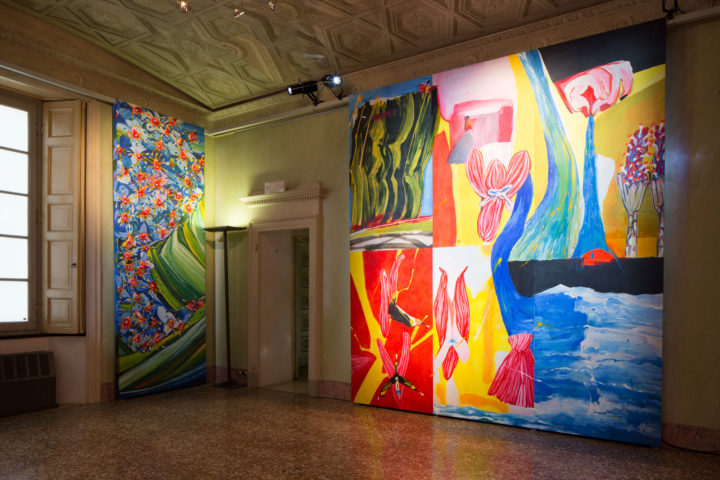
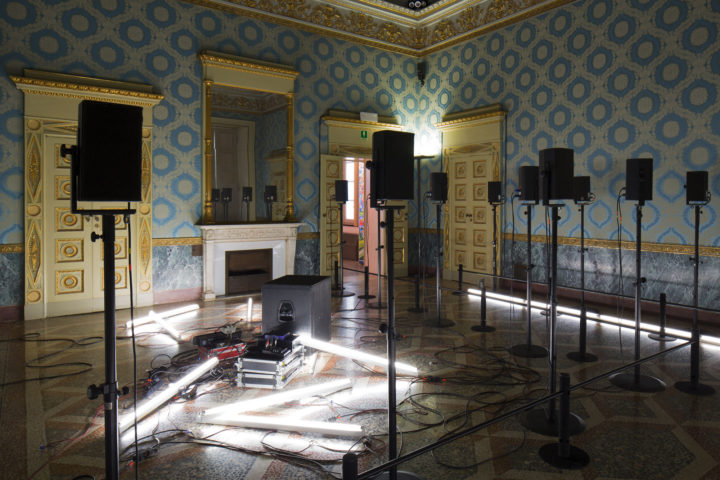
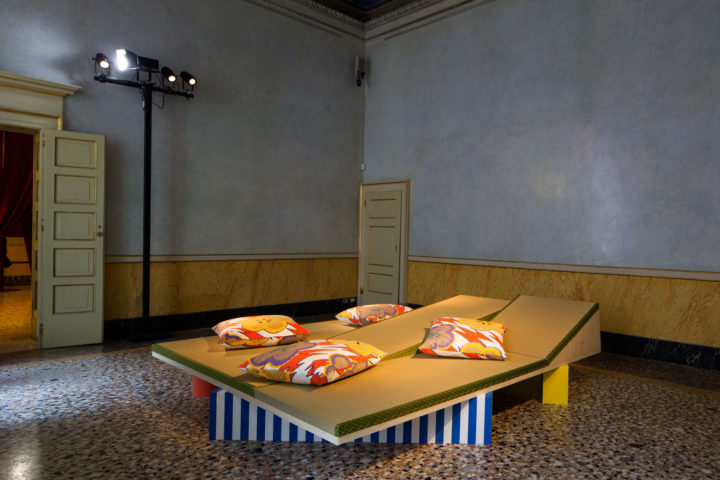
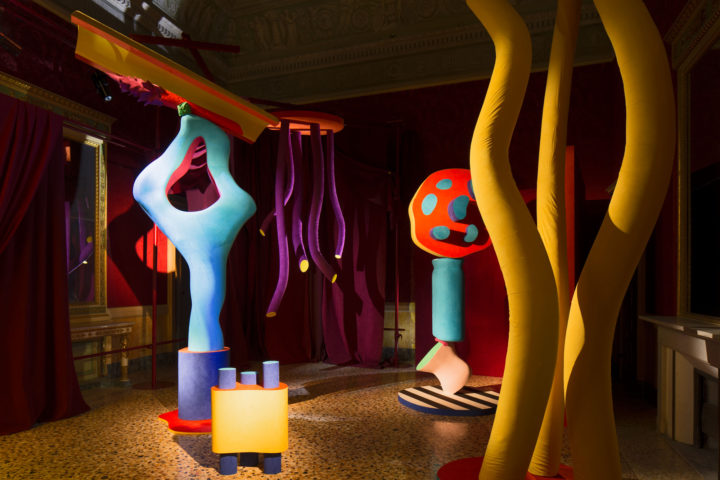
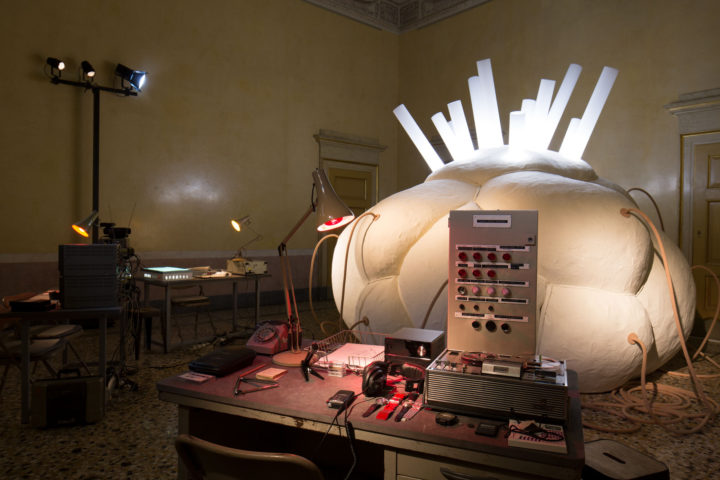
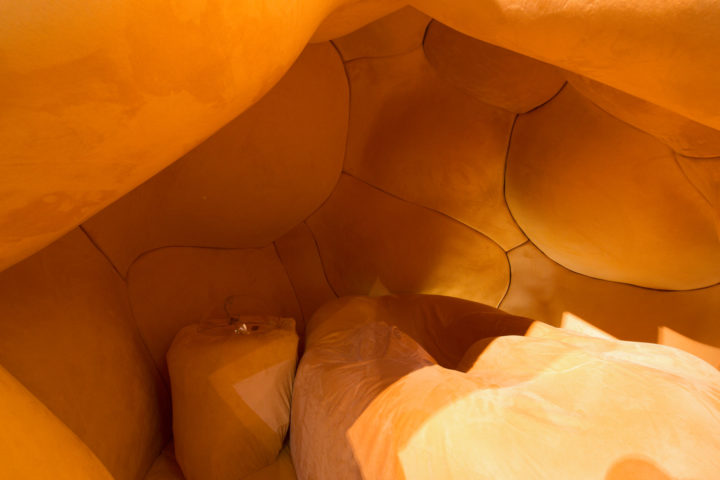
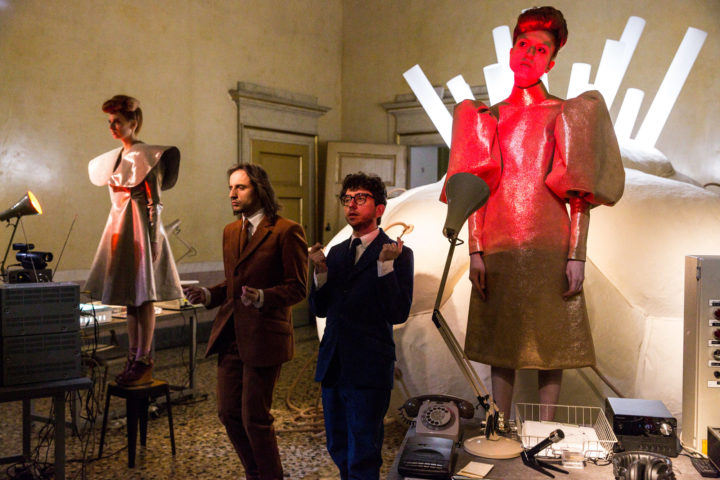
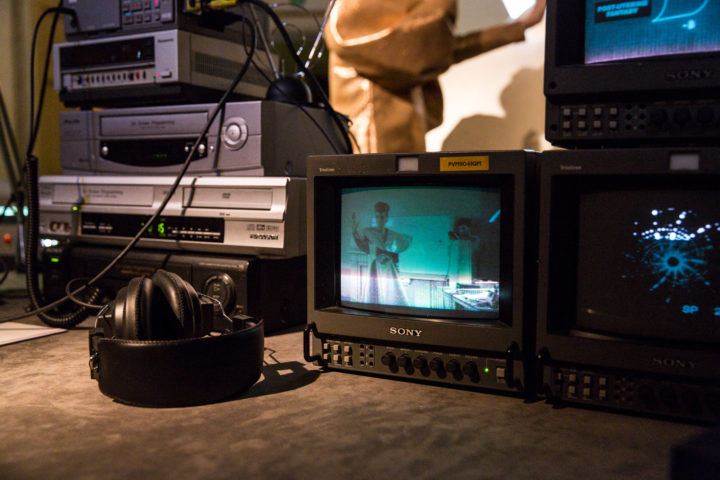
FANTASY ACCESS CODE
Fantasy Access Code
Alcantara and 6 artists on a journey through the Apartment of the Prince
Artists: AKI KONDO, MICHAEL LIN, SOUNDWALK COLLECTIVE, GEORGINA STARR, NANDA VIGO, LORENZO VITTURI
Duration: From 28 March to 30 April 2017
Venue: Apartment of the Prince, Palazzo Reale, Milan
Curator: Davide Quadrio, Massimo Torrigiani
Free entrance
Fantasy Access Code. Alcantara and 6 artists on a journey through the Apartment of the Prince is an exhibition promoted and produced by the Municipality of Milan – Culture, Palazzo Reale (Royal Palace) and Alcantara, designed especially for the rooms of the Apartment of the Prince, open to the public from Tuesday 28 March to Sunday 30 April 2017.
Alcantara’s third exhibition project at Palazzo Reale, Fantasy Access Code is the second show in a cycle curated by Davide Quadrio and Massimo Torrigiani, aimed at reinterpreting a space with strong historical connotations along contemporary lines. The company, which produces and sells Alcantara® worldwide, in this new project continues the exploration of the expressive potential offered by its material through the work of some of the most refined and sensitive artists of our day: all from different creative spheres, they were invited to address the specificities of a unique medium, in the quite exceptional context of the Apartment of the Prince.
The six international artists called upon to take part in this mission are: Aki Kondo, Michael Lin, Soundwalk Collective, Georgina Starr, Nanda Vigo and Lorenzo Vitturi. Each of them has come to terms with the evocations inspired by the place which, like a fantastical creative device, has given rise to the composition of highly original works, all produced using the Alcantara® material. The outcome is a choral itinerary, both multi-faceted and unitary, put together as a series of ‘cabinets of curiosities’ which has made it possible to bring the Apartment back to life as a boundless source of inspiration. An organism capable of telling stories from the past or ones which never took place at all, and not just a mere frame for the exhibition.
The title in Italian, Codice di avviamento fantastico, references the mechanism of the same name as described by Gianni Rodari (1920 – 1980) in his booklet Grammatica della fantasia. Introduzione all’arte di inventare storie (‘A Grammar of Fantasy. Introduction to the Art of Making Up Stories’, Einaudi Ragazzi, 1973). The author explains how to set up a self-sustaining chain of ideas, associations of marvelous images and views to construct literary texts. In the same way, the exhibition itinerary is structured like a cosmology of amazing worlds arising from the direct relationship with the spaces, dislocated along the ten rooms that make up the Apartment of the Prince. Each one constitutes a stop-off point along the imaginary journey undertaken by each artist, but also a starting point for the imagination of each and every visitor to these spaces – normally closed to the public – letting them enter parallel worlds, casting their gaze beyond the threshold and thus overcoming the limit between reality and imagination.
Visitors will be led along a path suited to all: adults, children, art experts and the merely curious. The exhibition goes from the spaceship by Nanda Vigo which has knocked down the walls of Palazzo Reale, via the garden created by Aki Kondo, the audio itinerary through the world of Alcantara by the Soundwalk Collective, right up to the unprecedented encounter between Milan and Taiwan staged by Michael Lin, only for the journey to then set off once more through the psychedelic forest of Lorenzo Vitturi and blast back to the past in Georgina Starr’s time machine.
“Our collaboration with Palazzo Reale thus continues, and we’re extremely pleased about that,” says Andrea Boragno, Chairman and CEO of Alcantara, “The perfect combination of evocative spaces, such as those provided by the Apartment of the Prince, and the great versatility of Alcantara® allowed us to come up with a winning formula. The ongoing desire to accept new expressive challenges, experimenting with the various narrative forms of the contemporary world, has given life to unprecedented creative ideas that underline how the company identity is also manifested through its commitment to the cultural life of our country.”
“The buildings are alive. They have character and memory. They tell the stories of those who built them, lived in them, loved them and hated them. They withhold dreams and desires. They are thresholds for the imagination of worlds, of the past or ones that have never existed. Alcantara comes up with new things to extract the extraordinary from the everyday, from what is most familiar to us,” is the comment of the exhibition curators Massimo Torrigiani and Davide Quadrio.
PRESS CONTACTS
PCM STUDIO
Via C. Goldoni 38 – 20129 Milan
press@paolamanfredi.com | Tel. +39 02 87286582
Paola C. Manfredi | paola.manfredi@paolamanfredi.com
Elena Conenna
elenamaria.conenna@comune.milano.it
THE EXHIBITION ITINERARY
The overture to the exhibition is entrusted to the Italian artist Nanda Vigo (Milan, 1936) with CRASH (in the Royal Palace), an intervention which explores the great variety of textures and shades of Alcantara®, destabilising visitors even before they enter the actual heart of the show. The first room is ‘go’, like the starting square found on all the best board games: a spaceship has crash-landed into the Royal Palace, wedged between the walls of the room, and the impact has opened up a passageway onto a new world, the bright and beautiful colours of an alien garden, complete with a sprinkling fountain of light.
The theme of nature is the mainstay of Time Limit, the mysterious Eden created by the Japanese artist Aki Kondo (Hokkaido, 1987) in the following room, where large-scale works house compositions of drawings and brightly coloured paintings, printed on Alcantara® and finished by hand during the display preparations.
The sound and light installation entitled Resonances, by the artists and musicians of Soundwalk Collective (New York – Berlin, 2009), tells of the genetic code that underlies the formation of Alcantara®. The collective carried out a series of recordings around the Alcantara factory, gathering the sounds of machinery and the ambient noises that characterise the working environment. The outcome is a composition that reveals the humanised nature of every robotic process. Visitors are invited to follow an illuminated path leading them into the listening area and then out of it again, thus making their own physical presence an integral part of the production process.
With the work Milano (Daybed), Michael Lin (Taiwan, 1964) stages an encounter between a Milanese gentleman and a typical producer of Taiwanese tea, in the historical context of an early 19th-century apartment. The display, entirely coated in Alcantara®, draws inspiration from the compositional syntax elaborated by the Memphis group: agglomerates, juxtapositions and the use of garish colours, thus giving life to an ideal representation of a traditional Taiwan tea room decorated with the typical local patterns. A portmanteau between Radical Design, vernacular memories and the spaces steeped in history of the Apartment of the Prince.
Lorenzo Vitturi (Venice, 1980), an Italian artist based in London, has worked on the alternation of proportions, coming up with various passages from the microscopic world to that of macroscopic dimensions. Starting from the shooting of the various production phases that give life to Alcantara®, the artist made enlargements of images portions and turned them into three-dimensional objects, then assembled into multiform sculptures with bright colours, which together make up a psychedelic jungle entitled The Garden Inside the Thread.
Lastly, with the work Moment Memory Monument, Georgina Starr (Leeds, 1968) brings visitors back into the sci-fi atmosphere with which they were welcomed at the start, catapulting them into the very heart of the scenery of the 1968 cult film Je t’aime, Je t’aime by Alain Resnais. The protagonist of the display is The Sphere, an interactive time machine coated in Alcantara®. Visitors, passing by the objects that recreate the atmosphere of a science lab, may take their places inside and let themselves be transported by an audio narrative taking them back into their own past.
In the occasion of the opening and over the course of the exhibition, interventions will be carried out by performers playing the role of lab assistants, dressed in clothes made of Alcantara®, ready to guide the public along this journey into time.
Once again, Alcantara®, a versatile material used widely from the car industry to that of fashion, demonstrates the endless possibilities that it is capable of generating to the various languages that make up contemporary art. The artists involved have thus been allowed to give shape to their own imagination, letting themselves be freely inspired by the Prince’s Apartment and the specificities of the medium adopted.
ARTISTS’ BIOGRAPHIES
Nanda Vigo
Born in Milan in 1936, she lives and works between Milan and Eastern Africa. After graduating from the Institut Polytechnique in Lausanne and training in San Francisco, in 1959 she opened her own studio in Milan. From then on, the key theme of her art has been the conflict/harmony between light and space. In 1959 she began to frequent the studio firstly of Lucio Fontana, before drawing closer to the artists who had founded the Azimut Gallery in Milan: Piero Manzoni and Enrico Castellani. In that period, among her various journeys around exhibitions right across Europe, she got to know the artists and places of the ZERO movement in Germany, Holland and France. In 1959 she began designing the ZERO House in Milan, which was then completed in 1962. Between 1964 and 1966, she took part in many ZERO exhibitions throughout Europe. In 1965 she curated the legendary exhibition ZERO avantgarde in Fontana’s studio in Milan.
Between 1965 and 1968, she collaborated with Gio Ponti and created the Casa sotto la foglia, in Malo (province of Vicenza). In 1971 she was granted the New York Award for Industrial Design for the development of her lampshades (‘Lampada Golden Gate’), and that same year, she implemented one of her most spectacular projects for the Casa-Museo Remo Brindisi at Lido di Spina (province of Ferrara). In 1976 she won the First St. Gobain Prize for glass design. In 1982 she took part in the 40th Venice Biennale.
In 1997 she curated the display of the exhibition Piero Manzoni – Milano et Mitologia at Palazzo Reale in Milan. Her works are to be found in the permanent collection of the Design Museum of the Triennale. Her activity is characterised by a constantly interdisciplinary relationship between art, design, architecture and the environment, she is also involved in projects as an architect, designer and artist. Since 2013, some of her works have been present in the collection of the Ministry of Foreign Affairs. In 2014-15 she exhibited at the Guggenheim Museum in New York, at the Martin-Gropius-Bau in Berlin and at the Stedelijk Museum in Amsterdam as part of the retrospectives dedicated to ZERO. Between 2015 and the start of 2016, she staged various solo shows: Affinità elette at the Centro San Fedele in Milan, followed by that at the Fondazione Lercaro in Bologna, Zero in the Mirror at the Galleria Volker Diehl in Berlin, and at the MAC in Lissone, as well as the one at the Sperone Westwater Gallery in New York. She took part in the XXI Triennale International Exhibition in Milano (21st Century. Design After Design), and in 2016 she presented her first monumental work, Exoteric Gate, displayed in the courtyard of Ca’ Granda at the University of Milan.
Aki Kondo
Born in Hokkaido in 1987, she lives in Kanagawa. Solo shows: Daiwa Foundation, London, 2016; ShugoArts Gallery, Tokyo, 2016, 2015, 2014; Takahashi Collection, 2014; Nagoya City Art Museum, 2013; Mie Prefectural Art Museum, 2013; JIKKA, Tokyo, 2012; ShugoArts Gallery, Tokyo 2012; Enoma, Sendai, 2010. Recent group shows: Kasugai Civic Cultural Foundation, Nagoya, 2016; Tokyo Opera City Art Gallery, Tokyo, 2015; Kirishima Open-Air Museum, Kagoshima, 2013; Sapporo Art Park, Hokkaido, 2013; Kawaguchiko Museum of Art, Yamanashi, 2013; The Ueno Royal Museum, Tokyo, 2013; Ginza Mitsukoshi, Tokyo, 2013; and Asian Art Museum, San Francisco, 2012.
Michael Lin
Born in Taiwan in 1964, he lives and works in Taipei. A far cry from the notion of painting as an object of contemplation, his pictorial installations of monumental proportions transform and redesign public and museum spaces through the usage of geometries and designs taken from a range of decorative traditions. Transforming the architecture of the museum space, his works call on us to reconsider the perception of these places, highlighting their role as spaces of interaction, meeting and recreation. His works have been showcased in international institutions such as the Venice Biennale; MoMA PS1 (New York); Palais de Tokyo (Paris); the Vancouver Art Gallery; the Museum of Contemporary Art (Tokyo); the Rockbund Art Museum (Shanghai); and more recently at the Eslite Gallery (Taipei), the Museum of Contemporary Art and Design of Manila (Philippines) and Leo Xu Projects (Shanghai) in 2016; and the High Museum of Atlanta and the SCAD Museum of Art in Savannah (United States) in 2015.
Soundwalk Collective
A collective of musicians and artists with studios in New York and Berlin, its members Stephan Crasneanski, Simone Merli and Kamran Sadeghi came together in 2009 to produce concept albums, sound installations and live performances, often in collaboration with artists, musicians and writers, who have recently included Jean-Luc Godard, Nan Goldin and Patti Smith. The Soundwalk Collective’s approach to composition combines anthropology, ethnography, non-linear narratives, psycho-geography, the observation of nature and the exploration of recording and synthesis processes. Their compositions always come from specific places and require long periods of travel and fieldwork.
Soundwalk Collective
Among other venues, over the years they have performed at the Opéra de Lyon, the CTM Festival (Berlin), the KW Institute of Contemporary Art (Berlin), the Novas Frequencias Festival (Rio De Janeiro), the Strichka Festival (Kiev), Arma 17 (Moscow), the Barbican Centre (London), Berghain (Berlin), the Georges Pompidou Centre (Paris), the Florence Gould Hall (New York), Mobile Art of Zaha Hadid (Hong Kong, Tokyo, New York), MUDAM (Luxemburg); MuCEM (Marseilles); the Madre Museum (Naples); the National Museum of Singapore; the New Museum (New York); TAP (Poitiers) and Villa de Noailles – Centre d’Art et de Culture Contemporain (Hyeres); and the Volksbühne (Berlin). They have held solo shows at the Rubin Museum in New York, the District Six Museum in Cape Town, ‘Capo d’Arte’ in Gagliano del Capo (Lecce) and in Times Square, where in 2016 they displayed Jungle-ized, a major interactive audio-visual installation. Killer Road, their homage to the singer and musician Nico, produced in collaboration with Patti Smith and released only recently, has so far been taken to Abu Dhabi, Berlin, London and New York.
Georgina Starr
Born in 1968 in Leeds (UK), she trained at the Slade School of Art in London and the Rijksakademie van Beeldende Kunst in Amsterdam. She lives and works in London, where she began her career in the early 1990s, joining the group of the Young British Artists. Since then, her video, sound, installation and performance works have been displayed frequently around the world, including her recent solo shows at the Pinksummer Gallery (Rome, 2016) and the Middlesbrough Institute of Modern Art (UK, 2015), as well as group shows at the Cooper Gallery (Dundee), the Vernon Street Gallery (Leeds), Pivô (São Paulo), Chateau Shatto (Los Angeles) in 2016; the Kemper Art Museum (St. Louis, United States), the Museum of Liverpool (UK), the De La Warr Pavilion (Bexhill-on-Sea, UK), the MUMA (Melbourne) and the Drawing Room (London) in 2015. In the month of May 2017, the FRAC Franche-Comté will feature a major retrospective of the 25 years of her artistic career, entitled Hello. Come here. I want you.
Lorenzo Vitturi
Born in Venice in 1980, he is an Italian photographer and sculptor who lives in London. Previously a painter of film sets, Vitturi has transposed this experience into his own photographic research, based on site-specific interventions on the edge between photography, sculpture and performance. In Vitturi’s work, photography is conceived as a space of transformation, where the various disciplines come together in the representation of an ever more complex urban reality. Vitturi has recently exhibited at the Photographers’ Gallery in London, the Yossi Milo Gallery in New York, the Contact Gallery in Toronto and the CNA in Luxemburg. The artist has also taken part in various group exhibitions at the MAXXI in Rome, the Georges Pompidou Centre in Paris, the Milan Triennale and the Shanghai Art Museum. Following the group show Picture Perfect (Viasaterna, Milan), in 2016 he held his first one-man show in Italy, Droste Effect Debris and Other Problems, curated by Fantom.
CURATORS’ BIOGRAPHIES
After having founded and directed the BizArt Center between 1998 and 2010, the first non-profit artistic/creative workshop in Shanghai, where he has lived since 1994, in 2007 Davide Quadrio created Arthub Asia, a platform for producing and promoting contemporary art of and in Asia. As part of these experiences, he has staged countless exhibitions, teaching projects and cultural exchanges, fostering relationships between institutions right around the world. He was a consultant for the creative space Bund18 in Shanghai (2005-08) and he curated the Chinese edition of the exhibition dedicated to the stylist Vivienne Westwood promoted by the Victoria & Albert Museum, the touring exhibition of Droog Design (in Shanghai, Shenzhen and Beijing), as well as the one-man show by Olivo Barbieri for the Shanghai Biennale in 2006, the institution for which in 2012 he coordinated the City Pavilions project. His more recent initiatives include curating the double solo show, together with Shaway Yeh, of Zhang Enli and Christopher Doyle at the Aurora Museum in Shanghai; the curating, together with Chiara Bertola, of the Qiu Zhijie exhibition at the Querini Stampalia Foundation during the Venice Biennale in 2013; the retrospective, curated with Noah Cowan, of Yang Fudong for the Toronto Film Festival 2013, and the solo show held by Jompet at the Fondazione Gervasuti of Venice during the Venice Biennale 2011. Gervasuti on the occasion of the Venice Biennale 2011. Along the years, he has commissioned and produced works with, among others, Surasi Kusolwong, Michael Lin, Liu Jianhua, Christian Marclay, Paola Pivi, Qiu Zhijie, Francesco Vezzoli, Cao Fei, Wu Tsang, Yin Xiuzhen, and Zhang Peili. He is an honorary member of the International Cultural Association of Shanghai, a government agency for cultural exchange, a lecturer at Shanghai’s Institute of Visual Arts and he was the curator for contemporary art at the Aurora Museum, Shanghai from 2013-16.
Massimo Torrigiani is the artistic director of the new centre for contemporary art of the Municipality of Bari, and is a member of the curating committee of the Teatro dell’arte of the Triennale di Milano. From 2013 to 2016, he also sat on the scientific committee of the PAC, the contemporary art exhibition space of Milan City Council, and since 2014 he has been the creative director of Art In The City Shanghai: a festival dedicated to the new creative scene in China. Furthermore, he is also the artistic director of Capo d’Arte, a cycle of exhibitions held at Gagliano del Capo (Lecce), for which he has organised solo shows by figures such as Yang Fudong, the Soundwalk Collective and Shilpa Gupta. Since 2009 he has co-directed the activities of Fantom, a curating and publishing projects focusing on photography and sound. Since 2010-12 he has directed the contemporary art fair in Shanghai. He lives in Milan, where the Boiler Corporation is based: the creative agency which he co-founded in 2001 in order to publish the international art magazine Boiler.
Since 2010 Quadrio and Torrigiani have collaborated on exhibitions, projects and publications. Among these, with Alcantara, the exhibition Ho visto un re / The King and I (staged both in Milan and Shanghai); the contemporary art fair of Shanghai; the retrospective of Yang Fudong for Capo d’Arte 2014; the festival Art In The City Shanghai (2014-16), and their work with the Scientific Committee of the PAC from 2013 to 2016.
The curatorial coordination of the exhibition, the production of the works and their display, has been carried out by Selva Barni with Ilaria Speri, members of Fantom.
THE APARTMENT OF THE PRINCE
The Apartment of the Prince, comprised of ten rooms in the south-west wing of the Royal Palace, represents a precious example of royal home from the early 19th century, still virtually intact. Foreseen by the Napoleonic reorganisation of the building in 1805, it was destined for use as an ‘apartment available for princes’ in 1830, destined for any princes or archdukes born from Ranieri’s marriage to Elizabeth of Savoy-Carignano. The restauration works, which foresaw the sophisticated redecoration of the rooms – largely in Restauration style, under the guidance of the architect Giacomo Tazzini – came to an end in 1838, shortly after the arrival of the Emperor Ferdinando I, arriving in Milan to be crowned head of the Lombardo-Venetian Kingdom.
PALAZZO REALE (THE ROYAL PALACE)
The Apartment may be reached from the Atrium of the Four Columns and what is now the First Chamber of the Tapestries of Palazzo Reale. Housing the city government ever since the late Middle Ages, the Palazzo had been strengthened as a political centre under the dynasties of the Torriani, Visconti and Sforza families. Home to a sumptuous courtly life, in the 17th century it passed under the control of the Austrian Empire. After undergoing neo-classical restauration works headed by Giuseppe Piermarini, it was enriched by the monumental stairway at the entrance, by the new façade onto Piazza Duomo and the modern-day Piazzetta Reale. Previously home to kings and queens, in 1919 it was given over to the State and partially opened to the public, having been embellished by the work of great decorators, sculptors, painters and carpenters. Hit by the bombings of 1943, the Palazzo lost most of its treasures. For more than 20 years, reconstruction and restoration works were carried out by Milan City Council and the Superintendency for Archaeological Heritage, before its ultimate reopening as an exhibition venue.
Palazzo Reale
Piazza Duomo, 12
20122, Milan
www.palazzorealemilano.it
